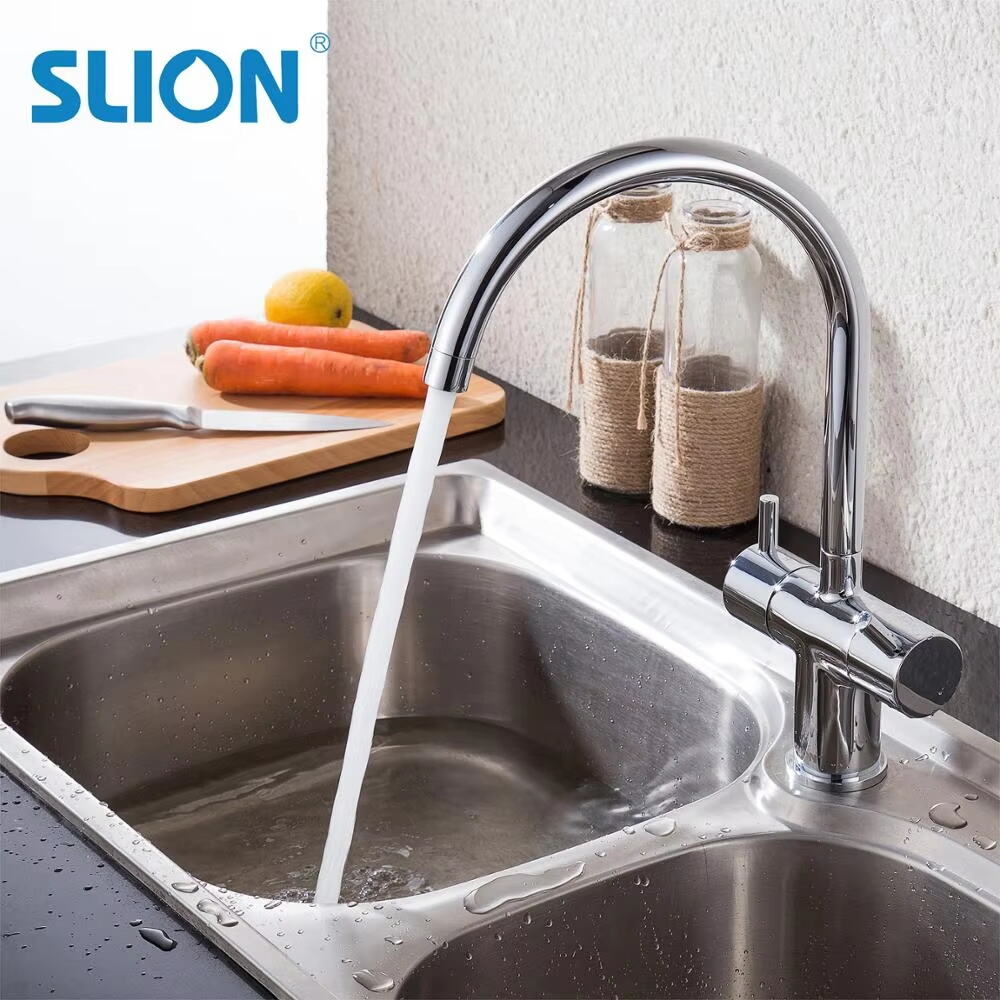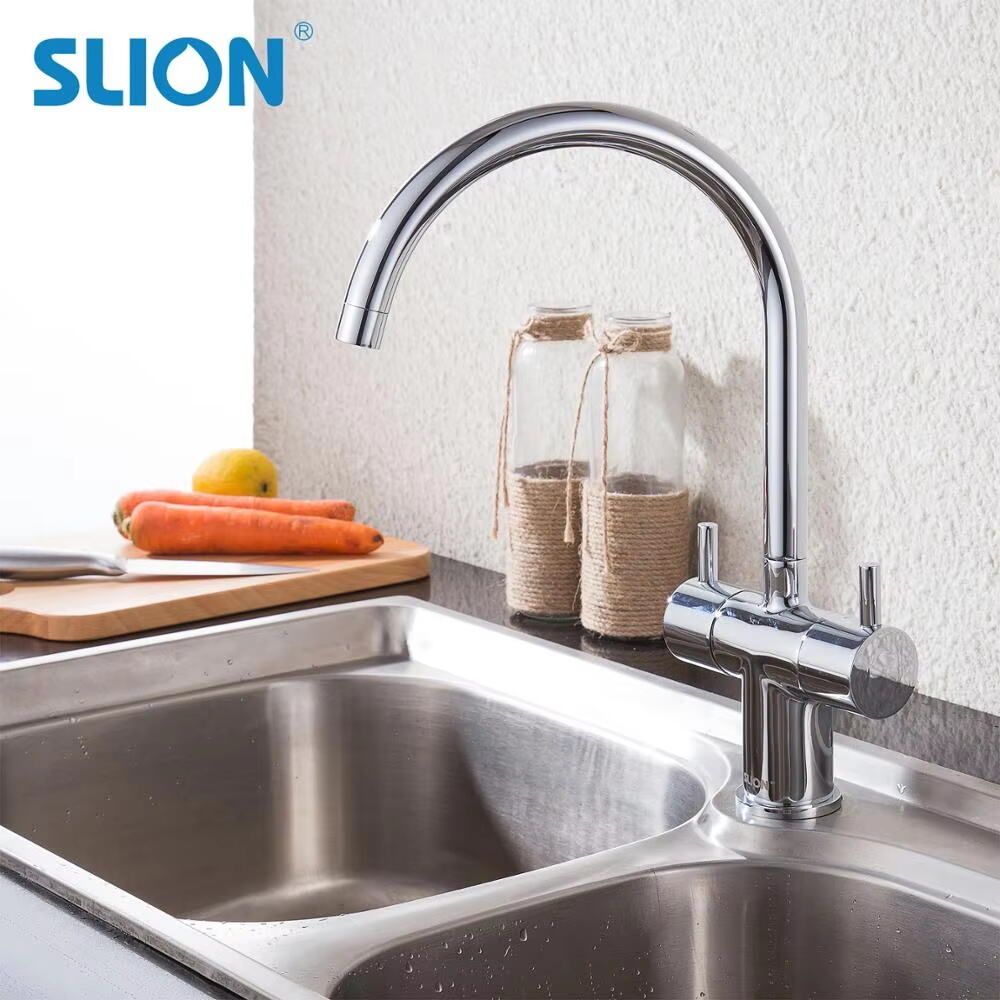The Importance of Choosing the Right Kitchen Faucet
The Kitchen Faucet is one of the most frequently used fixtures in the home, serving both practical and aesthetic purposes. It is not only a tool for washing and cleaning but also an integral part of the overall kitchen design. Selecting the wrong Kitchen Faucet can create daily frustrations, waste resources, and reduce the efficiency of kitchen tasks. By carefully considering functionality, durability, and style, homeowners can avoid common mistakes and ensure the Kitchen Faucet complements the kitchen space for years to come.
A Kitchen Faucet that is chosen wisely enhances convenience and even contributes to energy and water conservation. However, with so many styles and technologies available, it is easy to overlook key details. Understanding the most common issues in Kitchen Faucet selection allows homeowners to make informed decisions and avoid regrets. This approach ensures the faucet remains reliable, easy to use, and aligned with modern living needs.
Material and Durability in Kitchen Faucet
Low-Quality Materials
One of the most frequent issues in Kitchen Faucet selection is choosing a model made from poor-quality materials. Faucets constructed from lightweight alloys or plastic may appear attractive initially but often wear down quickly. A Kitchen Faucet crafted from stainless steel or brass provides resistance to rust, corrosion, and damage, ensuring years of reliable use.
Corrosion and Finish Problems
The finish of a Kitchen Faucet is just as important as the material. A weak finish will peel, tarnish, or show water spots over time, diminishing the faucet’s appearance. Opting for finishes like brushed nickel or chrome provides better resilience against daily wear and contributes to maintaining a polished look.
Design and Aesthetic Considerations in Kitchen Faucet
Mismatched Styles
A common mistake is selecting a Kitchen Faucet that clashes with the overall design of the kitchen. An ultra-modern faucet in a traditional space or a bulky industrial faucet in a minimalist setting can feel out of place. Ensuring that the Kitchen Faucet matches cabinet hardware, lighting fixtures, and appliances creates a harmonious aesthetic.
Overly Complex Designs
Sometimes, homeowners are drawn to faucets with exaggerated features or unnecessary design elements. While these may appear unique, they can quickly feel overwhelming in a kitchen. A balanced Kitchen Faucet design should combine elegance with simplicity, creating a timeless look that integrates seamlessly into the room.

Functionality Challenges in Kitchen Faucet
Poor Spout Reach and Height
An often-overlooked issue in Kitchen Faucet selection is the spout’s reach and height. If the faucet is too short, it may not extend properly into the sink, leading to splashing and limited usability. On the other hand, a faucet that is too tall for the sink size can create mess and discomfort. A well-chosen Kitchen Faucet ensures the spout is proportioned to both the sink and the space.
Inadequate Handle Operation
Handles that are difficult to adjust or positioned awkwardly are a frequent frustration. A Kitchen Faucet should allow smooth and precise control of both water temperature and pressure. Ergonomic handles provide ease of use and prevent daily discomfort.
Technological Considerations in Kitchen Faucet
Ignoring Sensor Technology
Modern Kitchen Faucet innovations include touchless and sensor-activated models. Overlooking this option can mean missing out on enhanced hygiene and convenience. A touchless Kitchen Faucet reduces the spread of germs and allows users to activate water flow even with messy hands.
Complicated Features Without Usability
While technology can improve functionality, some faucets come with overly complicated controls that confuse users. Features should enhance convenience, not create extra steps. A Kitchen Faucet should strike the right balance between innovation and user-friendliness.
Water Efficiency in Kitchen Faucet
High Water Consumption
Another issue is choosing a Kitchen Faucet that consumes excessive water. Faucets without aerators or flow restrictors can waste significant amounts of water. Modern Kitchen Faucet designs incorporate eco-friendly technology to reduce consumption while maintaining strong water pressure.
Ineffective Temperature Control
Poor temperature regulation wastes both water and energy. A Kitchen Faucet with precise temperature control saves time and prevents unnecessary water flow. This feature is essential for households that value sustainability and efficiency.
Maintenance and Longevity in Kitchen Faucet
Difficult Cleaning Surfaces
A Kitchen Faucet that attracts fingerprints, smudges, or water spots requires constant cleaning. Choosing faucets with spot-resistant finishes reduces maintenance efforts and helps maintain a polished appearance. Easy-to-clean designs are crucial for busy households.
Complex Repair Requirements
Some faucets are built with complicated internal systems, making repairs costly and time-consuming. Selecting a Kitchen Faucet with accessible parts and standard fittings ensures that maintenance can be carried out with ease.
Installation Problems in Kitchen Faucet
Incorrect Sizing
One of the most common installation issues is selecting a Kitchen Faucet that does not fit the sink or countertop. Measuring mounting holes and sink dimensions beforehand prevents costly adjustments later. A well-matched Kitchen Faucet guarantees smooth installation.
Poor Professional Guidance
Homeowners sometimes attempt DIY installation without sufficient knowledge. This can lead to leaks, loose fittings, or long-term damage. Seeking proper guidance or professional installation ensures that the Kitchen Faucet operates flawlessly.
Luxury Features in Kitchen Faucet
Built-In Water Filtration
A growing trend is integrating water filtration into the Kitchen Faucet. This eliminates the need for separate devices and provides safe drinking water directly from the tap. Ignoring this option can be a missed opportunity for convenience and health benefits.
Multiple Spray Functions
Modern Kitchen Faucet designs often include multiple spray options for rinsing, cleaning, or gentle washing. Selecting a faucet without these features may limit versatility. A faucet with adjustable spray modes enhances the overall kitchen experience.
FAQ
What is the best material for a Kitchen Faucet
Brass and stainless steel are highly recommended materials due to their strength and corrosion resistance. They ensure the Kitchen Faucet remains reliable for daily use.
How can a Kitchen Faucet improve water efficiency
Many Kitchen Faucet models now include aerators and flow restrictors that reduce water usage. These features save water without compromising performance.
Why is spout height important in Kitchen Faucet selection
The spout height affects both comfort and practicality. A properly proportioned Kitchen Faucet prevents splashing and allows enough clearance for large pots and pans.
How should a Kitchen Faucet be maintained
Regular cleaning with mild soap and water, avoiding abrasive chemicals, and checking for leaks ensures long-lasting performance. Spot-resistant finishes also reduce cleaning efforts.
Table of Contents
- The Importance of Choosing the Right Kitchen Faucet
- Material and Durability in Kitchen Faucet
- Design and Aesthetic Considerations in Kitchen Faucet
- Functionality Challenges in Kitchen Faucet
- Technological Considerations in Kitchen Faucet
- Water Efficiency in Kitchen Faucet
- Maintenance and Longevity in Kitchen Faucet
- Installation Problems in Kitchen Faucet
- Luxury Features in Kitchen Faucet
- FAQ


